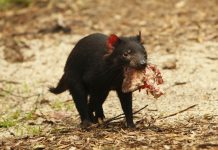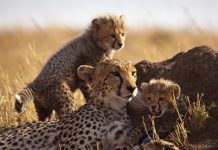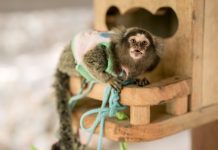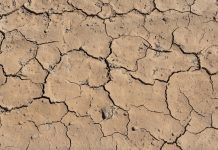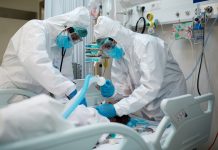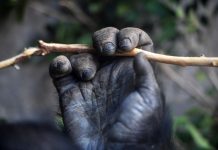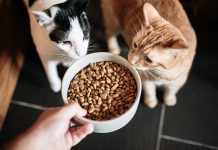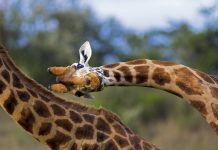Open Access Government produces compelling and informative news, publications, eBooks, and academic research articles for the public and private sector looking at health, diseases & conditions, workplace, research & innovation, digital transformation, government policy, environment, agriculture, energy, transport and more.
Home 2024
Archives
Cuba’s first motus tower for tracking migrant land birds
Keith Hobson, Professor and Research Scientist at Environment and Climate Change Canada and Western University, discusses updates in the expansion of tracking migratory birds in Central and South America, and the Caribbean.
The crucial role of scavengers in ecosystem health
Animal scavengers’ role in maintaining ecosystem balance is often overlooked. Dr Laurel Lynch from the University of Idaho tells us about her important research on how scavenging by Tasmanian devils influences ecosystem processes.
Isotopic applications assit in forensic tracking of illegally traded wildlife parts
Keith A. Hobson, a Research Scientist and Professor at Environment and Climate Change Canada, discusses the use of stable isotopes to trace the origins of animal parts in order to mitigate the illegal wildlife trade.
Sustainably developing great-tasting pet foods
Samantha Combe and Melissa Vanchina from Hill’s Pet Nutrition discuss the environmental impact of pet food, with a specific focus on sustainable alternatives to food palatants.
Further understanding the pet primate trade in the U.S.
Dr Melissa Seaboch explores the potential drivers of the pet primate trade in the U.S. and the troubling impact on both animals and owners.
Food webs and fish: Ocean climate change in Alaska
Open Access Government talks to ocean climate expert Dr. Robert Suryan, who is the lead of an ecosystem studies program at the Alaska Fisheries Science Center’s Auke Bay Laboratories.
Nutritional management of chronic kidney disease in pets
Renea Creech and Kim Wilson outline the challenges of Chronic Kidney Disease in pets, the irreversible loss of kidney function, and how nutrition can help.
Stored fuel’s importance for migrating monarch butterflies: Implications for conserving all migrant animals
In his latest research, Keith A. Hobson, Research Scientist and Professor at Western University, explores why stored fuel is critical to migrating animals, such as monarch butterflies.
The effect of soil degradation on human, animal and plant health
Dr. Christine Sprunger, soil scientist and ecologist at W.K. Kellogg Biological Station (KBS) and the Department of Plant, Soil, and Microbial Sciences at Michigan State University, discusses the danger of soil degradation on human and animal life, and what we can do to mitigate it.
Why do we always care about the welfare of laboratory animals?
Seasoned experts from the Daegu-Gyeongbuk Medical Innovation Foundation (K-MEDI hub) in South Korea share their research perspectives on the welfare of laboratory animals, including the issue of veterinary care.
Applying data science advances in disease surveillance and control
Dr. David S. Ebert from the University of Oklahoma’s Data Institute for Societal Challenges and Dr. Aaron Wendelboe from the University of Oklahoma Health Sciences Center outline how a cohesive, multidisciplinary, and multi-tiered approach can support a more predictive model in disease surveillance and control.
The function of fingerprints: How can we grip?
Professor Gun-Sik Park, in the Department of Physics and Astronomy at Seoul National University explores the function of fingerprints from a lens of understanding the mechanism of our human ability to grip.
Fostering nonhuman primate (NHP) brain research without animal sacrifice
The MacBrain Resource Center (MBRC) at Yale University School of Medicine is positioning itself at the forefront of innovative ways to provide cost-effective means for scientists to conduct de novo nonhuman primate brain research with extant materials.
Ensuring healthier pets through improved nutrient precision in pet foods
Improved nutrient precision in pet foods is critical to pets, people & planet; Dennis E. Jewell, PhD from Kansas State University & Matthew I. Jackson, PhD from Hill’s Pet Nutrition, explain.
Tracking animal migration with stable isotopes
Keith A. Hobson from Western University and Environment and Climate Change Canada, walks us through tracking animal migration with stable isotopes, starting with some background information.
Driving industrial biomanufacturing with evolution
Why do giraffes have long necks? At the University of Sheffield, Prof. Tuck Seng Wong applies Darwinian intrinsic research to the realm of industrial biomanufacturing.


